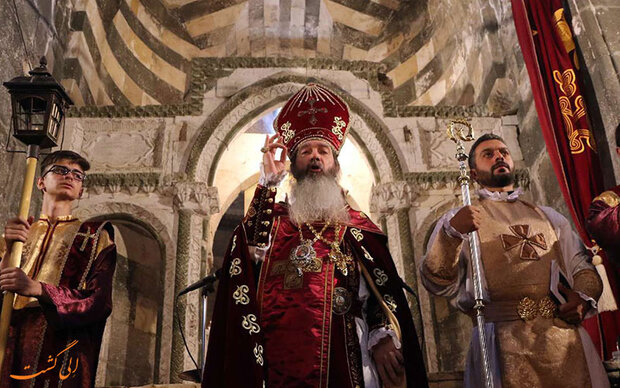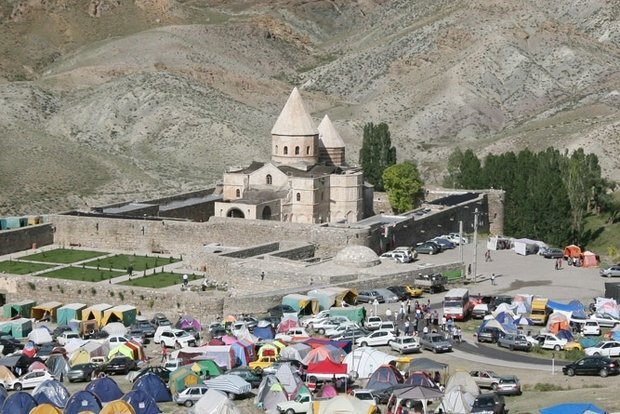TEHRAN—A host of Christian pilgrims have come together at St. Thaddeus, northwest Iran, to observe their annual ritual of Badarak.
The three-day event commenced on Friday in Qareh Klise (“the Black Church”), one of the oldest surviving Christian monasteries in the country, CHTN reported.
Baptism of children and youngsters along with performances of traditional songs and dances are amongst the highlights of the event, the report said.
The pilgrimage is traditionally made by travelers from Iran, Armenia, Syria, Lebanon, the Netherlands, France, Austria, Germany, Canada, and some other countries.
The event is of high importance for Iranian-Armenians who mostly come from the cities of Tabriz, Urmia, Tehran, Isfahan, and Qazvin, to stage the reunion in groups and families. It also provides them an opportunity to go on holiday and visit distant relatives.

Furthermore, the attendees commemorate the martyrdom of St. Thaddeus, one of the twelve disciples killed while he was preaching the Gospel. The legend says a church dedicated to him was first built in 68 CE where Qareh Klise is standing. Thaddeus was an apostle of Christ and the ceremony is rooted in the last supper with Jesus Christ on the night of his arrest and execution by the Roman soldiers.
It is situated in Chaldoran county some 20 kilometers from Maku, adjacent to the borders of Armenia, Azerbaijan, and Turkey. The ancient Church shows off elaborate bas-reliefs of flowers, animals, and human figures on its façade and exterior walls. It bears verses from the Old and New Testaments in Armenian calligraphy as well.
Together with St. Stepanos Monastery and the Chapel of Dzordzor, Qareh Klise was placed on the UNESCO World Heritage list in 2008 under the name “Armenian Monastic Ensembles of Iran”. All three sites are located in West Azarbaijan and are of high significance from historical and cultural perspectives. They bear credible testimony to interchanges with the ancient regional societies, in particular the Byzantine, Orthodox, and Persian. UNESCO has it that the churches bear examples of the outstanding universal value of the Armenian architectural and decorative traditions.


No comments:
Post a Comment